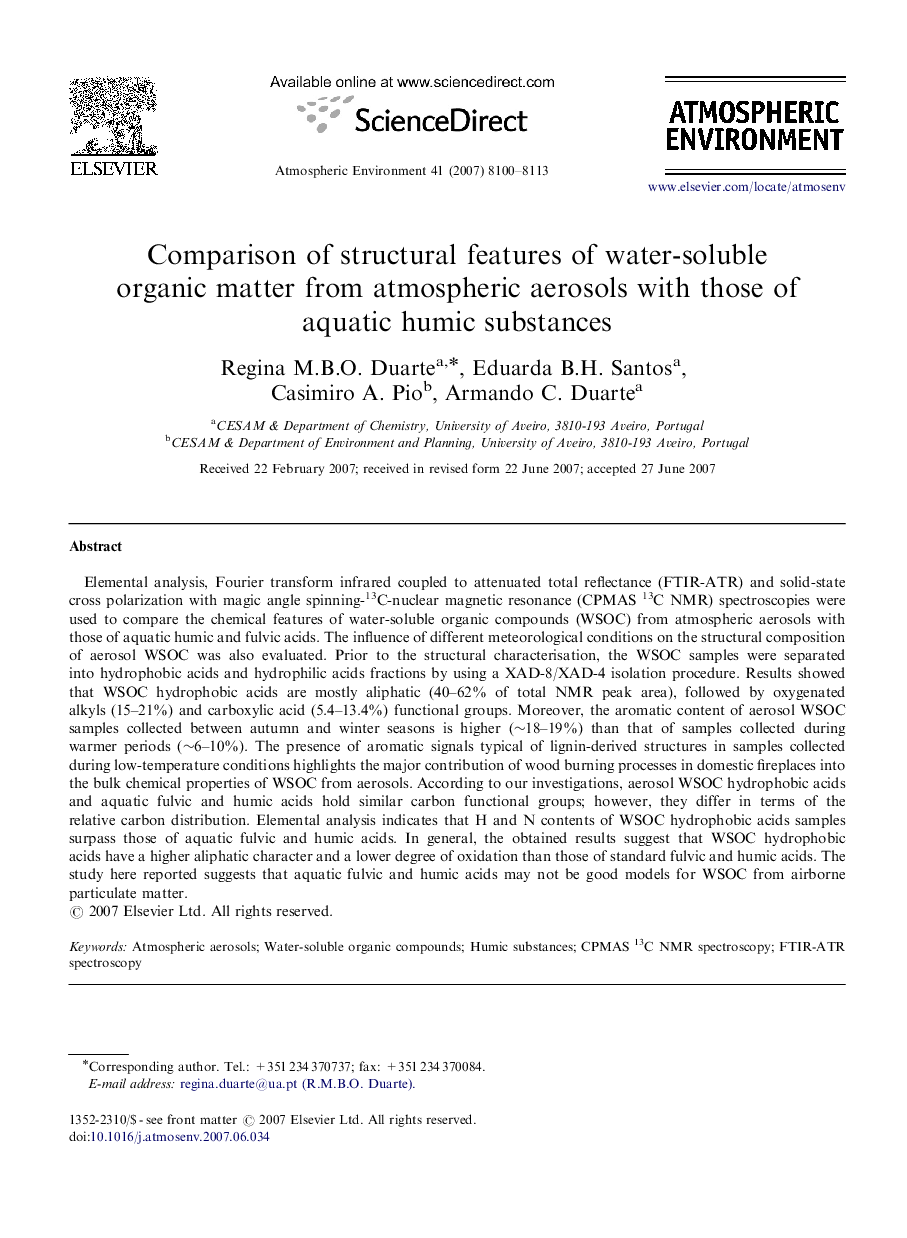| کد مقاله | کد نشریه | سال انتشار | مقاله انگلیسی | نسخه تمام متن |
|---|---|---|---|---|
| 4442965 | 1311173 | 2007 | 14 صفحه PDF | دانلود رایگان |

Elemental analysis, Fourier transform infrared coupled to attenuated total reflectance (FTIR-ATR) and solid-state cross polarization with magic angle spinning-13C-nuclear magnetic resonance (CPMAS 13C NMR) spectroscopies were used to compare the chemical features of water-soluble organic compounds (WSOC) from atmospheric aerosols with those of aquatic humic and fulvic acids. The influence of different meteorological conditions on the structural composition of aerosol WSOC was also evaluated. Prior to the structural characterisation, the WSOC samples were separated into hydrophobic acids and hydrophilic acids fractions by using a XAD-8/XAD-4 isolation procedure. Results showed that WSOC hydrophobic acids are mostly aliphatic (40–62% of total NMR peak area), followed by oxygenated alkyls (15–21%) and carboxylic acid (5.4–13.4%) functional groups. Moreover, the aromatic content of aerosol WSOC samples collected between autumn and winter seasons is higher (∼18–19%) than that of samples collected during warmer periods (∼6–10%). The presence of aromatic signals typical of lignin-derived structures in samples collected during low-temperature conditions highlights the major contribution of wood burning processes in domestic fireplaces into the bulk chemical properties of WSOC from aerosols. According to our investigations, aerosol WSOC hydrophobic acids and aquatic fulvic and humic acids hold similar carbon functional groups; however, they differ in terms of the relative carbon distribution. Elemental analysis indicates that H and N contents of WSOC hydrophobic acids samples surpass those of aquatic fulvic and humic acids. In general, the obtained results suggest that WSOC hydrophobic acids have a higher aliphatic character and a lower degree of oxidation than those of standard fulvic and humic acids. The study here reported suggests that aquatic fulvic and humic acids may not be good models for WSOC from airborne particulate matter.
Journal: Atmospheric Environment - Volume 41, Issue 37, December 2007, Pages 8100–8113